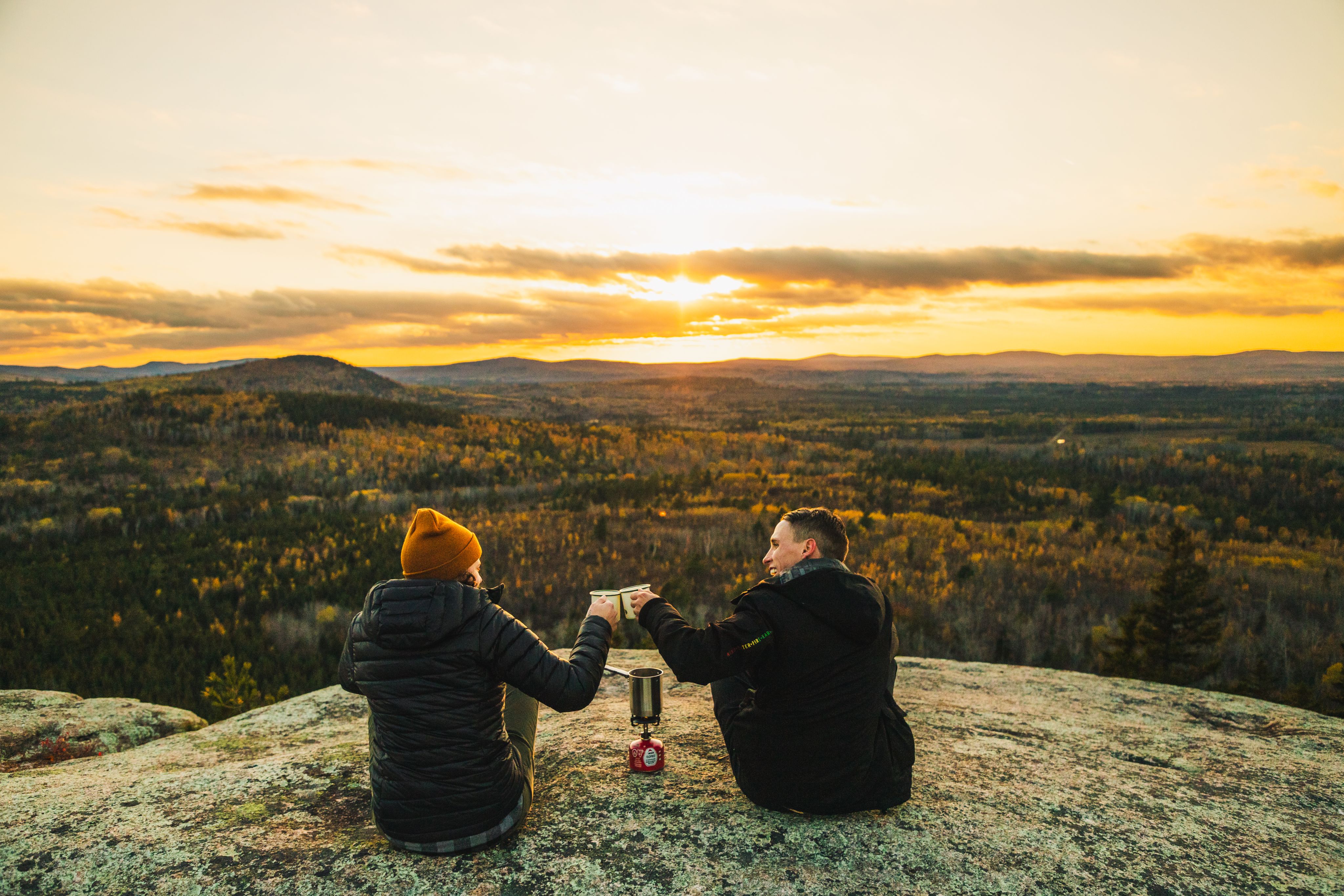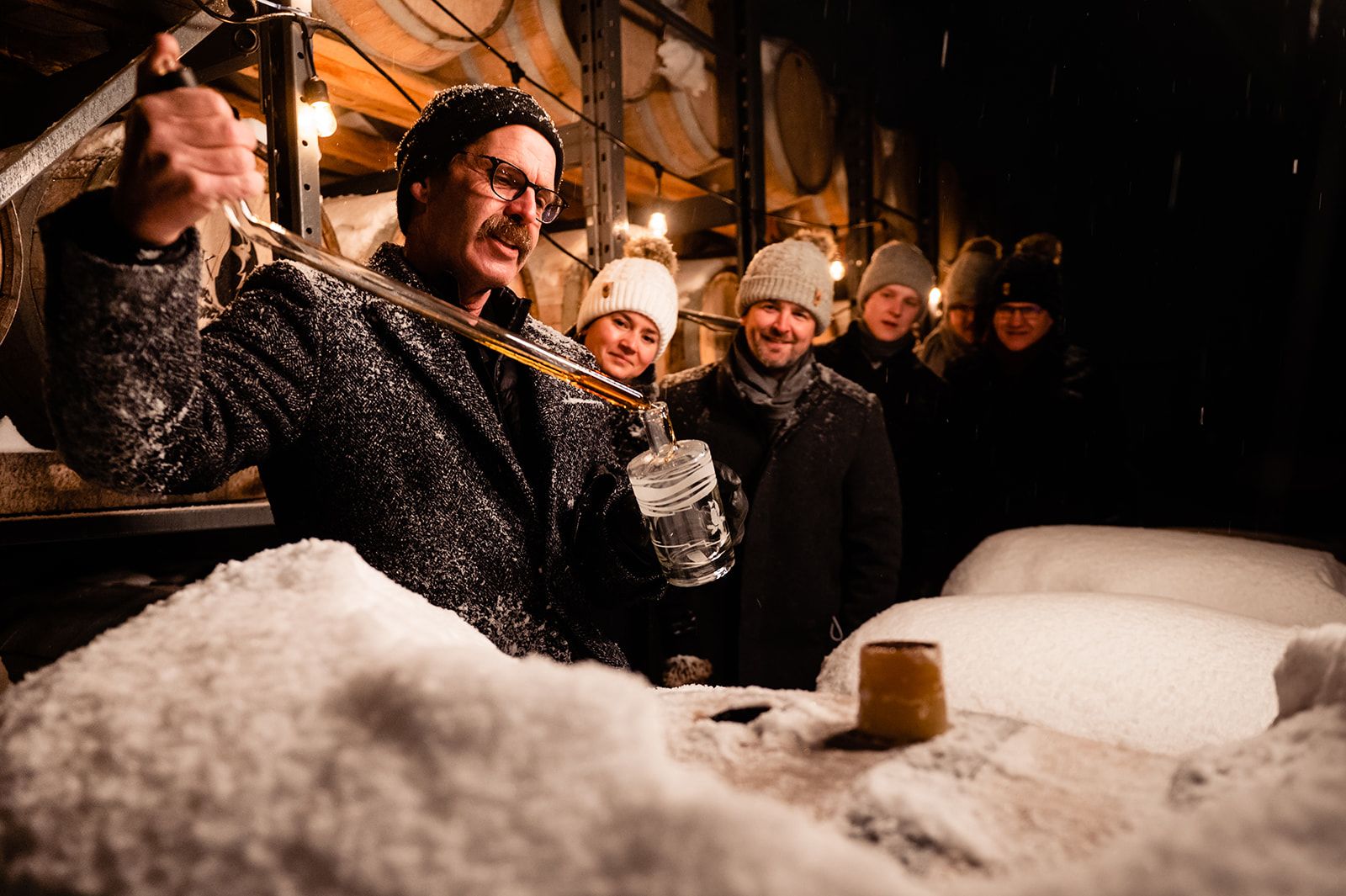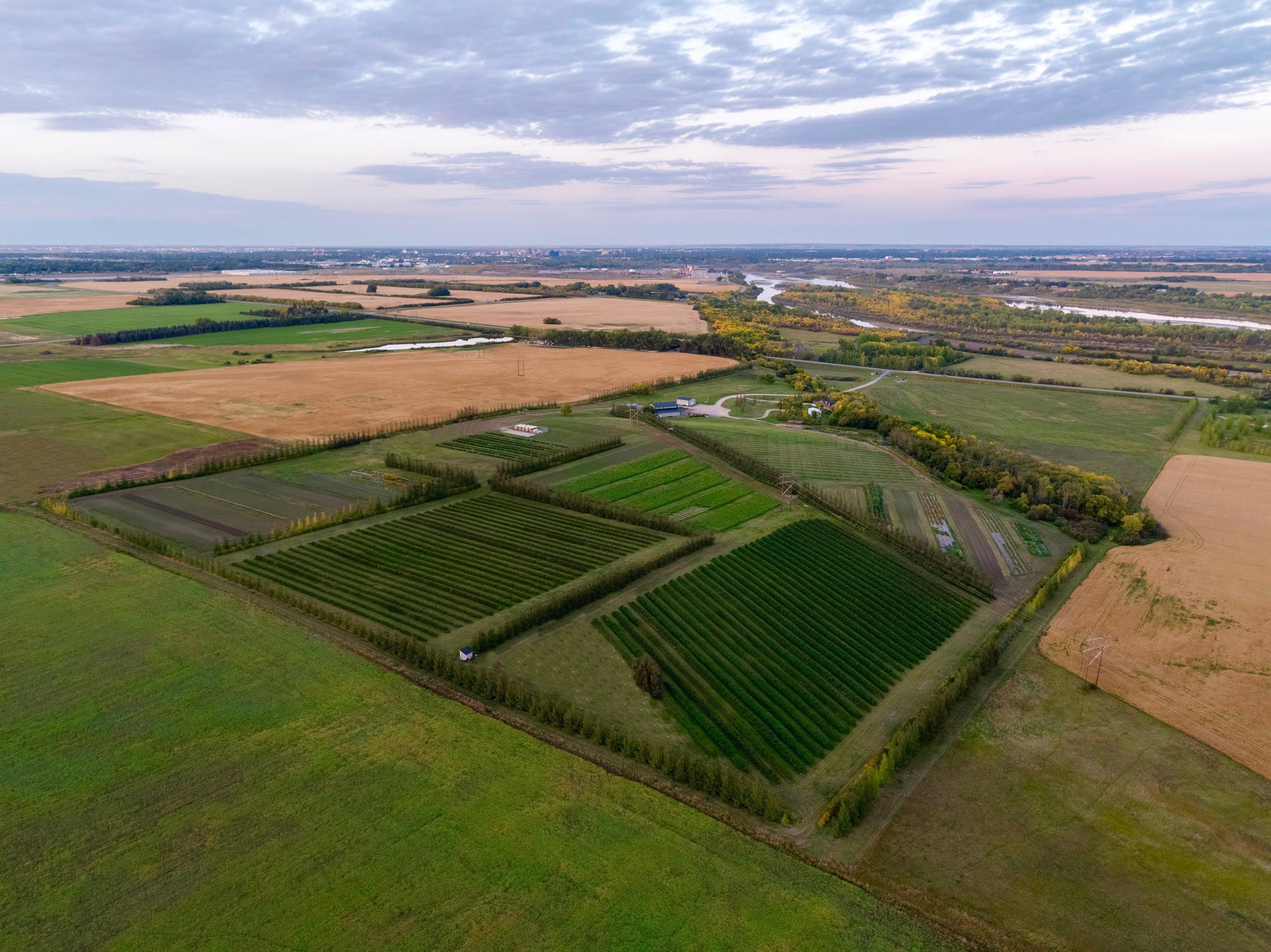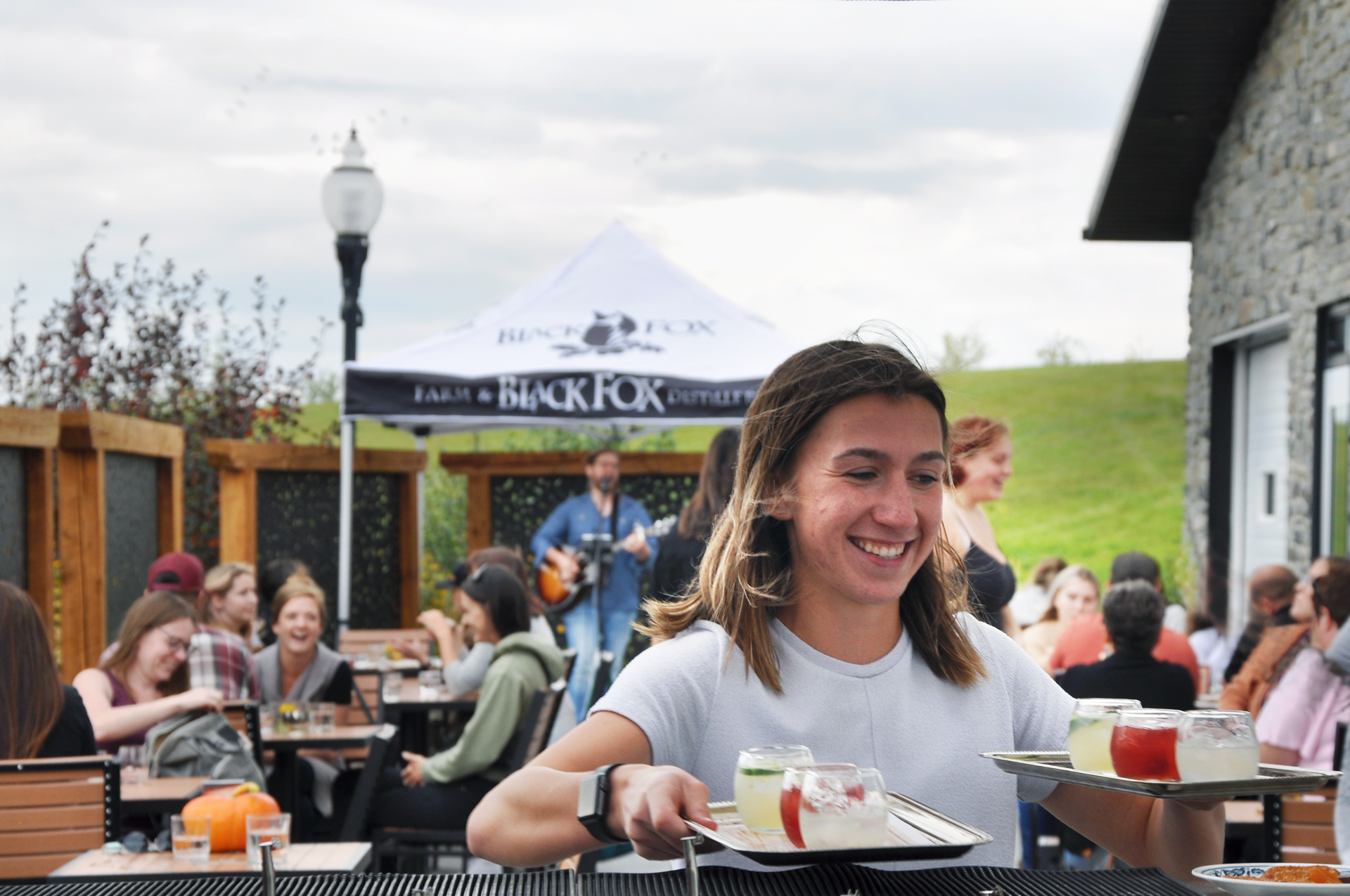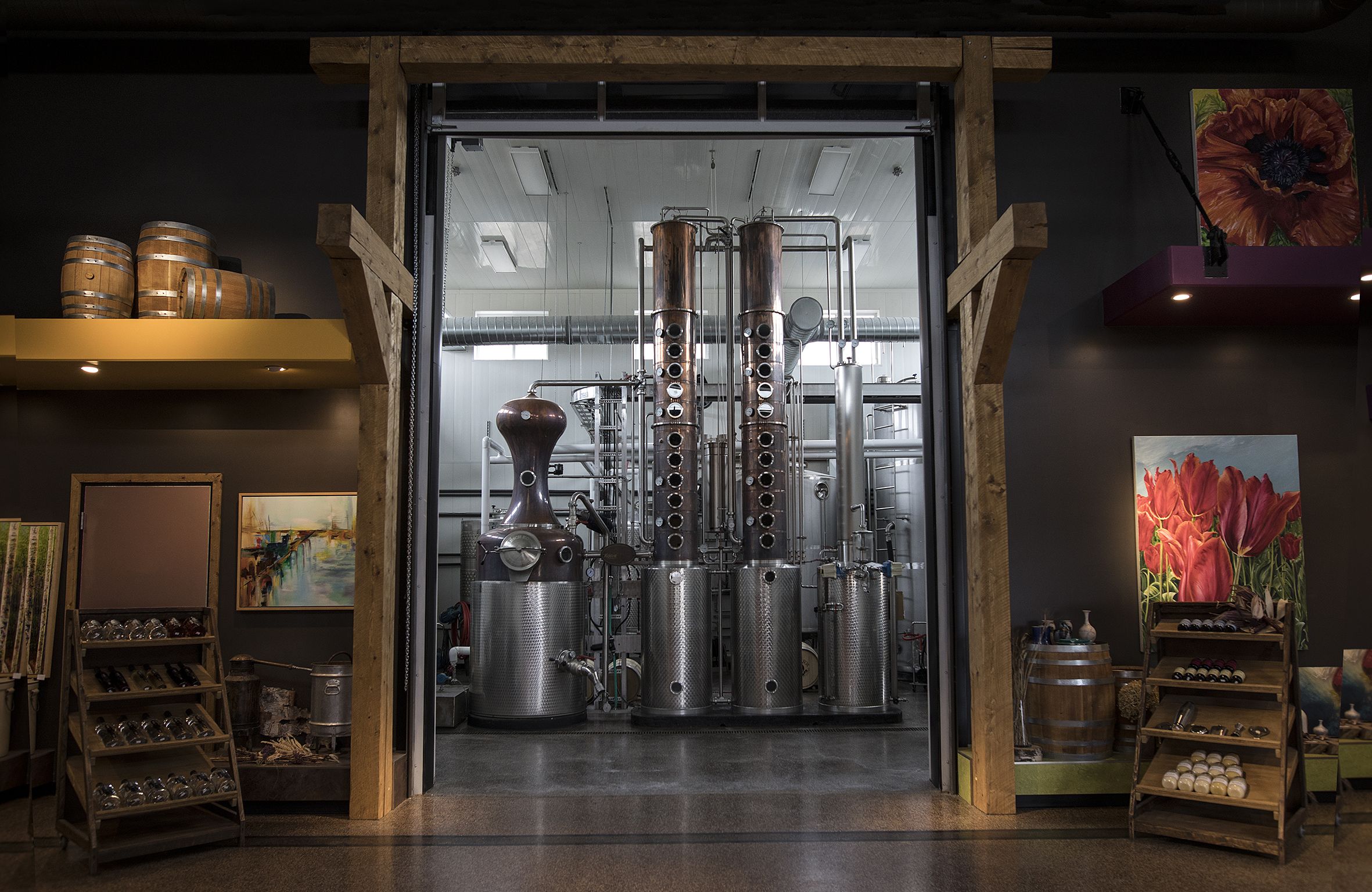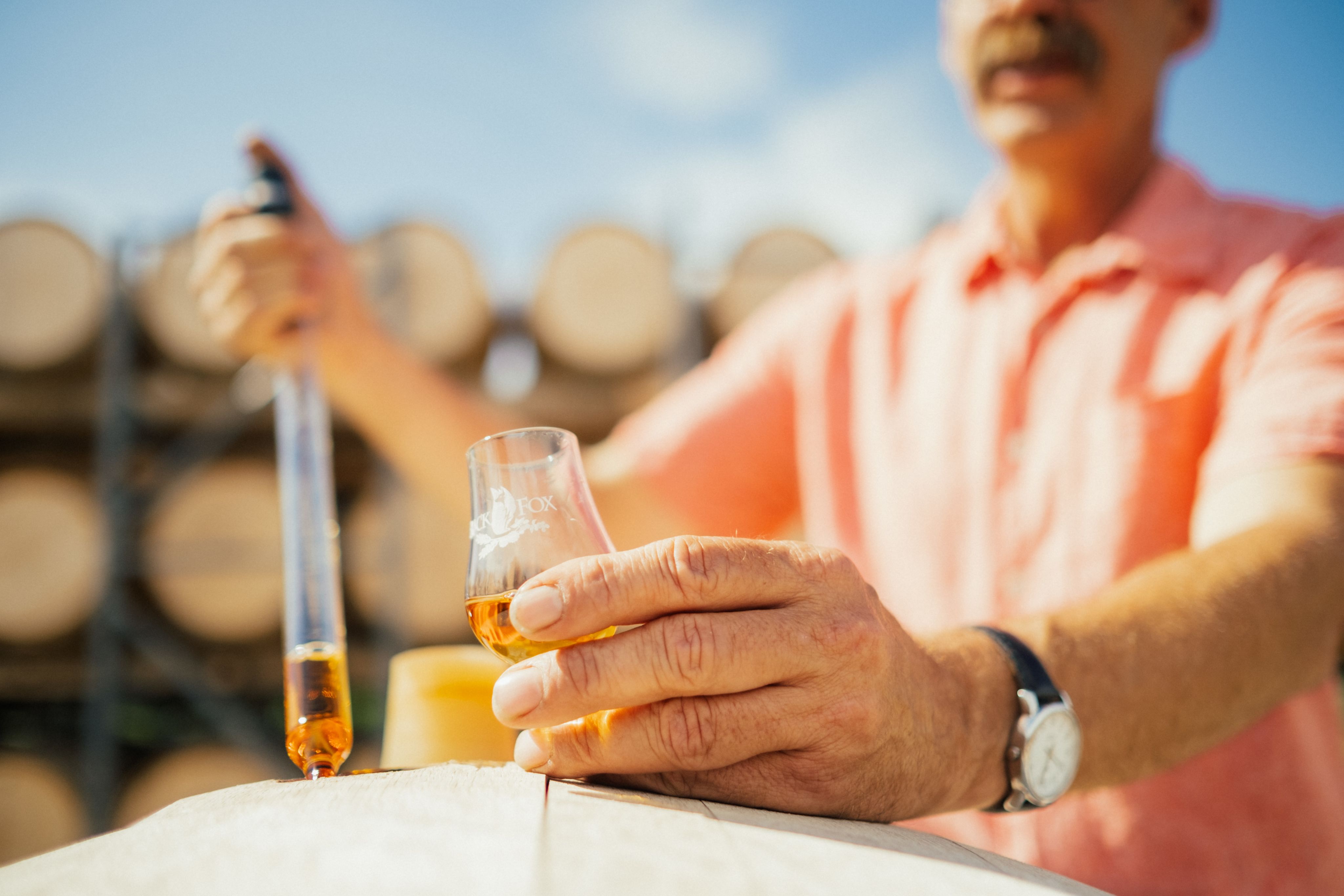Spirits on the Prairies
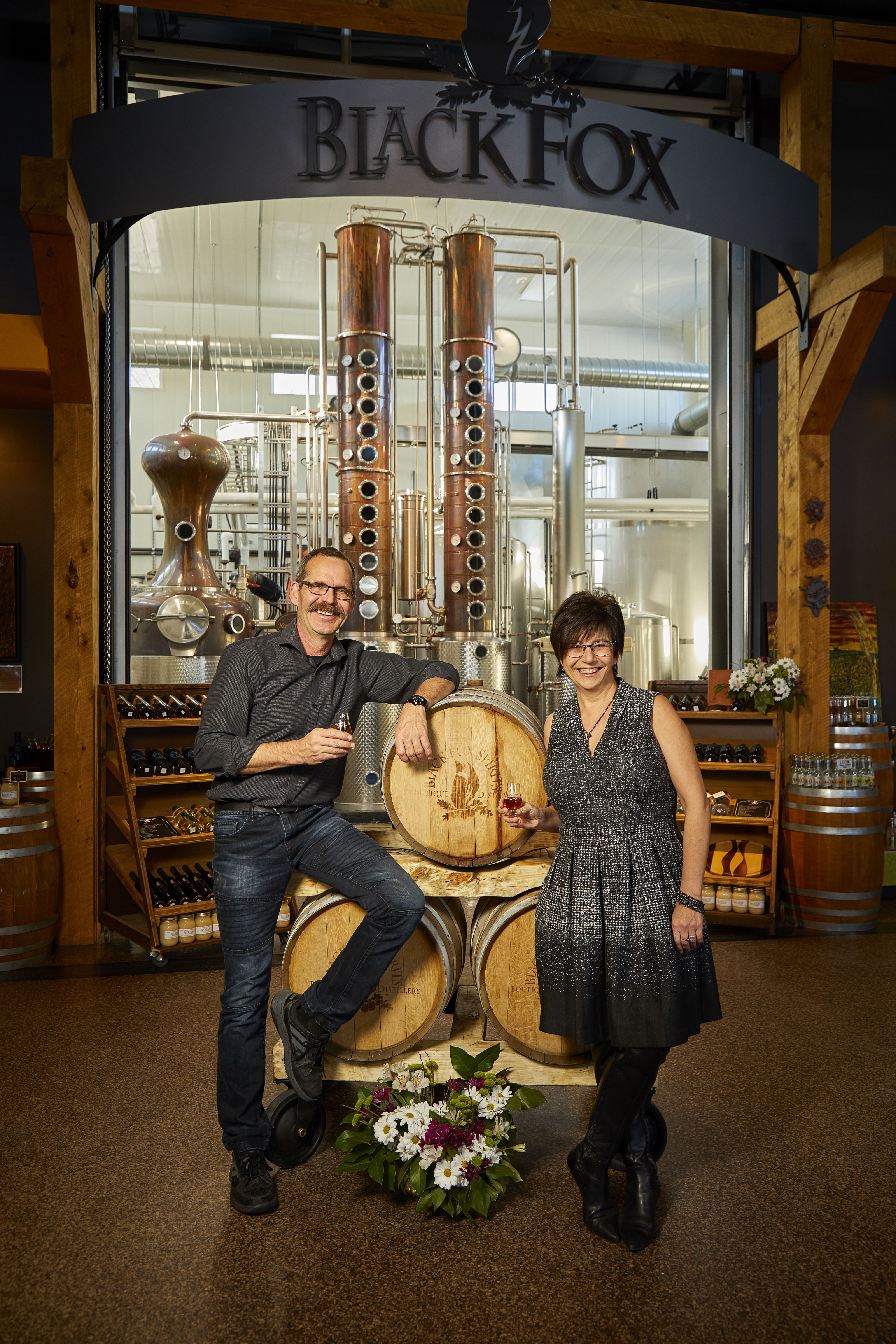
It is the middle of January on a clear Saskatchewan night. You and a few friends are standing around a cask of whisky, outside.
Despite the -30C, you're quite comfortable.
You’re gathered at a craft distillery built on an 80-acre farm, on the outskirts of Saskatoon.
As the distiller explains how storing the casks outdoors, exposed to winter’s frigid temperatures and summer’s scorching heat, shapes the whisky’s flavour, you glance up to see the northern lights dancing across the vast prairie sky.
You get lost in their beauty until a coyote’s piercing howl shatters your reverie.
The distiller draws a sample from the cask and then directs you back indoors to taste this ultra-premium Canadian whisky and learn more about how it’s made.
That’s the sort of experience the owners of Black Fox Farm & Distillery hope to offer visitors this winter after a successful test run last year.
Guests arrive by limousine, arranged by the distillery, and are handed toques, scarves and furs to keep them toasty before venturing outdoors for this unique-to-Saskatchewan whisky tasting.
Cultivating one-of-a-kind experiences and world-class spirits that pay homage to the land, the climate and the agricultural history of Saskatchewan are at the core of virtually everything that’s done at Black Fox, said Barb Stefanyshyn-Cote, who co-founded and co-owns the distillery with her husband, John Cote.
“We really like to invite people out to visit us,” she said. “It’s a chance for us to tell them the story of Saskatchewan, the story of agriculture, the story of pioneers, the story of Indigenous people; all the things that have sculpted where we are now. And then to show them how that affects the whisky.”

The path that led Barb and John to the business of distilling is also kind of unique.
They met as students at the University of Saskatchewan’s College of Agriculture. After graduating, they got married and moved to John’s parents' 1,500-acre farm in Leask, a small village an hour north of Saskatoon.
When his parents decided to retire, the young couple bought them out and proceeded to grow the operation. After expanding the farm to 5,000 acres, they reached a crossroads.
Their choices — keep growing or head in a new direction?
They chose the latter.
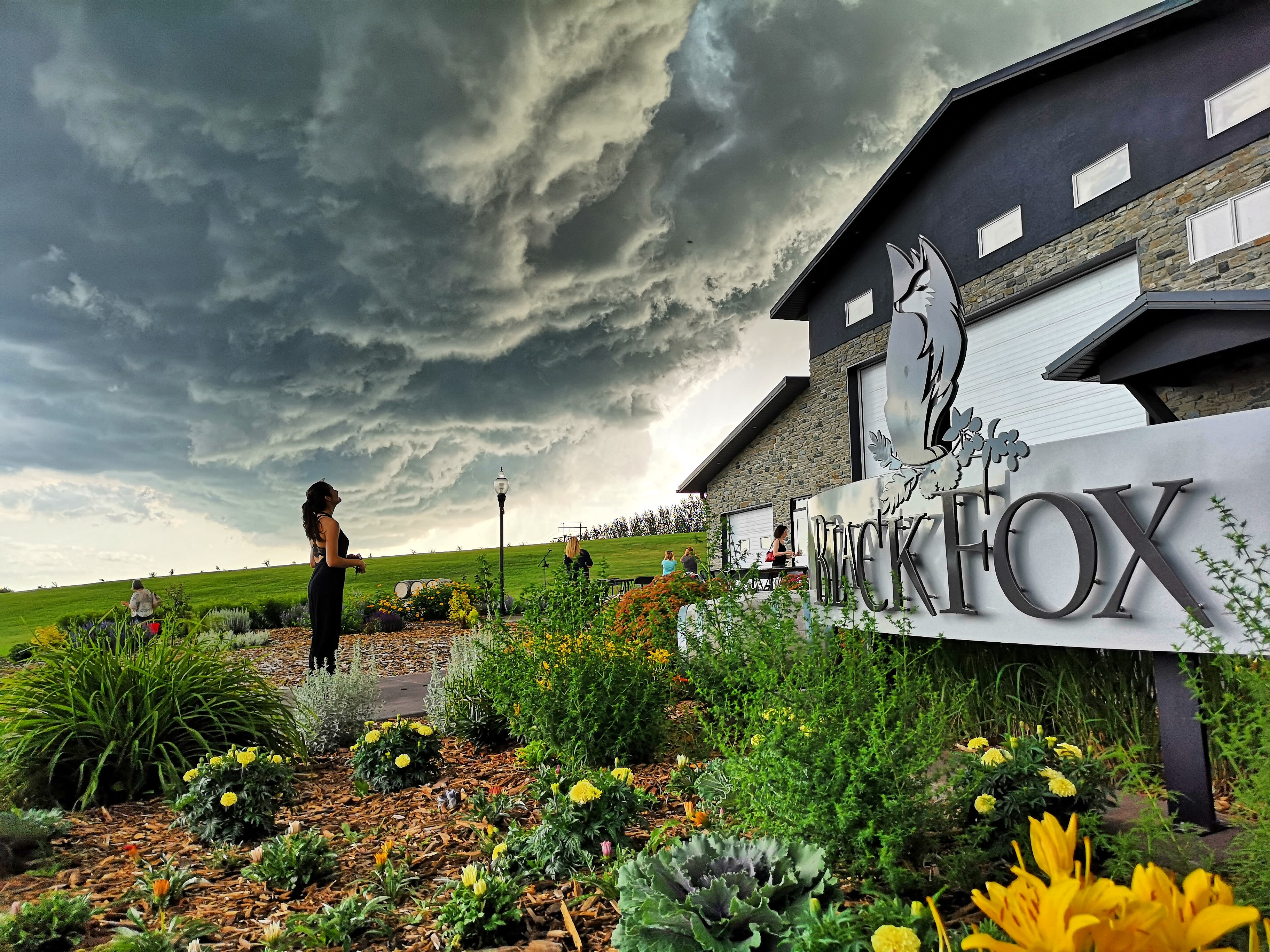
In 2010, wanting to start a business that, unlike grain farming, would bring them closer to their end customer, they decided to do “what is considered sacrilegious in Saskatchewan,” Barb said.
“We sold the family farm.”
That allowed them to purchase 80 acres on the outskirts of Saskatoon.
The farm was mostly “weeds, old fence lines and garbage,” Barb said so a lot of effort and investment was needed to transform it into what’s there today – a distillery and retail shop with the capacity to host 40 people and a patio, with capacity for 200, where guests can enjoy live music and a cocktail.
It also boasts several acres dedicated to pick-your-own flowers, a pumpkin patch, plus six acres of raspberries and five acres of haskap, for the gin they also make at Black Fox.
But, as Barb explains, it was a winding path to get here.
The original plan was to open a winery and a pick-your-own vegetable experience.
After a few disasters with the vegetables, they started to question the plan, Barb said. Then there was the realization that Saskatchewan’s climate isn’t conducive to growing grapes, so they’d have to produce fruit wine.
“We knew nothing about growing fruit, and we didn’t even like wine, so it made no sense to set up a winery,” Barb said. “But a distillery is based on grain and we know grain.”
With that, a new plan was hatched.
They decided to open a distillery, with John serving as head distiller, and offer people the chance to pick their own fresh-cut flowers while also growing the grains and berries used in the whiskies and gins they would produce.
By the time they’d built the distillery and fixed up the property — which included installing a game fence and bringing in an irrigation system featuring state-of-the-art techniques to minimize water usage — they were out of money.
Lacking the funds to build a warehouse for storing the whisky-filled casks, they were forced to leave them outside, “under the watchful eye of Mother Nature and Jack Frost,” Barb said.

As newbies to the industry who were keen to learn, when their first batch turned two years old, they sent a sample to a whisky expert in the United Kingdom for feedback.
His response was unexpected.
“He said, ‘Do not ever contact me again. This is not two-year-old whisky and I will not work with charlatans,’” Barb recalled.
Flabbergasted, John called back to ask for an explanation.
He told them their sample tasted way older and had far more colour than a two-year-old whisky.
“You’re buying someone else’s whisky, putting it in your barrels and calling it your own and I will not work with you,” she recalled him saying.
John asked if it was possible the use of new barrels or triticale, a wheat-rye hybrid not commonly used by other distillers, imbued it with characteristics of a more mature whisky.
The man said it was possible, but unlikely.
“So, John puffs up his chest and says, ‘Well, maybe I’m just a good distiller.’ And the guy says, ‘Nope.’ Just shoots him right down,” she recalls.
Then the expert asked where they store the whisky barrels. So, John explained they had no choice but to store them outside, year-round.
His response: “Nobody does that.”
As it turns out, doing things differently worked out well.
“It’s not the length of time in a barrel that gives the whisky its flavours, it’s the interaction of the whisky and the wood,” Barb explained. “Whisky warms up, it expands and it goes into the wood. Whisky cools down, it comes out of the wood. So, this remarkable temperature fluctuation we have on the prairies and storing our whisky outdoors has given us this incredible whisky that no one else can copy.”
It is a true taste of place and climate. But how good is it?
Since 2017, Black Fox has won multiple national and international medals including two golds and a master (higher than gold) at The World Whisky Masters competition. And their Distiller Blend was ranked among the top 20 worldwide whiskies at the International Wine and Spirits Competition in 2020.
Those who buy a bottle, which costs between $95 and $219, can find out what factored into creating that whisky’s flavour notes. On top, there’s a coin with a serial number that, when punched in on Black Fox’s website, brings up a Certificate of Provenance.
The certificate features a wealth of information including seasonal temperatures, the type of grain used, what the crop was like and the type of barrel it was aged in.
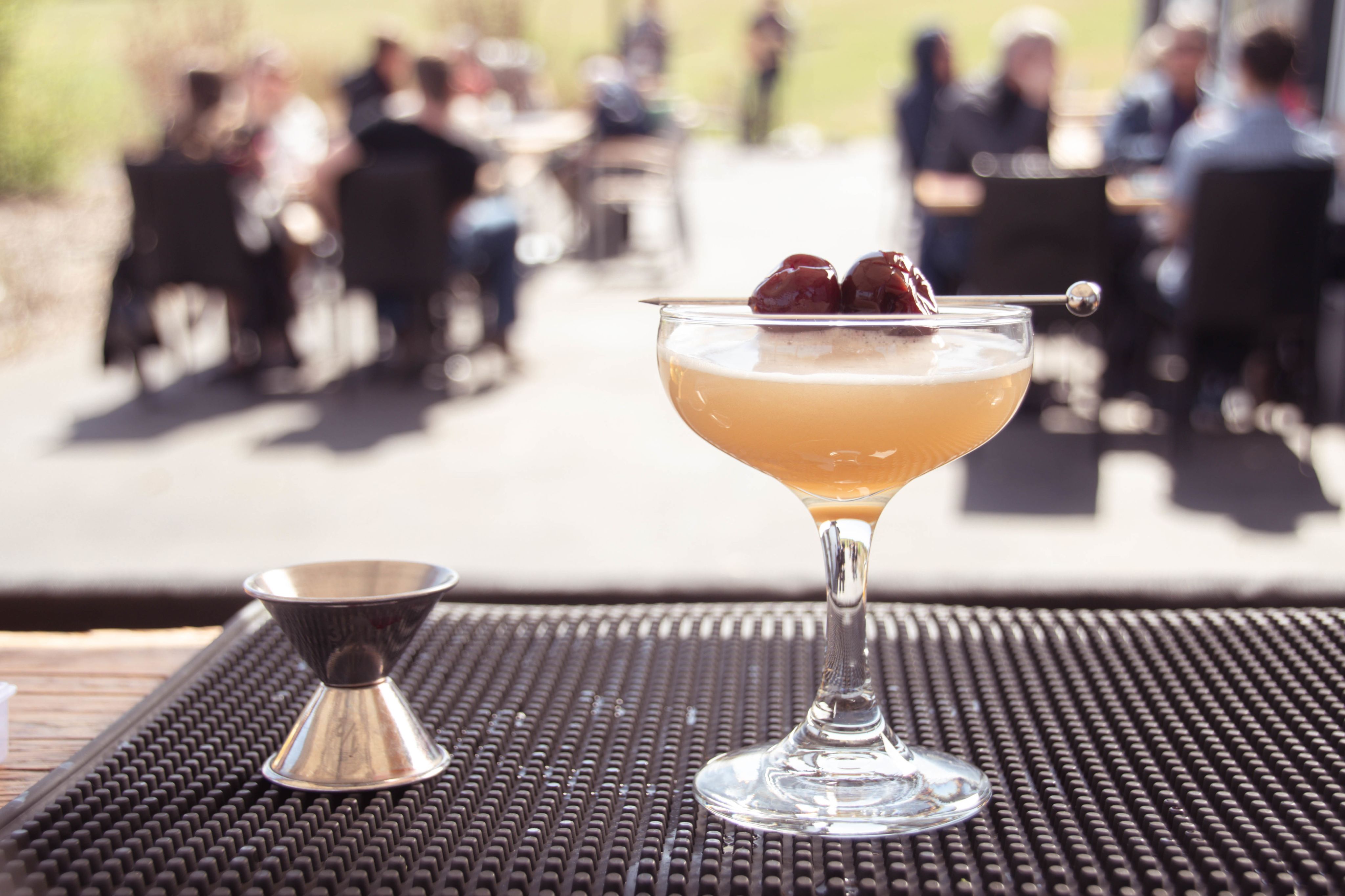
“We are striving for perfection. Every day we try to do something a little bit better than the day before. “
Along with its world-class Canadian whiskies, Black Fox is known for producing award-winning gins since the distillery opened in August 2015.
“The gin is fun,” Barb said. “Every solstice and summer equinox, my husband and his assistant distiller experiment with new gins. Some are good and some are not so good.”
Their gin creations, which cost between $53 and $81, include a cucumber gin, a haskap gin, a lilac gin and an oak-aged gin.
A few of these have netted awards including a masters medal for the Haskap Gin and a world’s best cask gin nod for the Oaked Gin.
“Not bad for a couple of peanuts out of Saskatchewan,” Barb said.
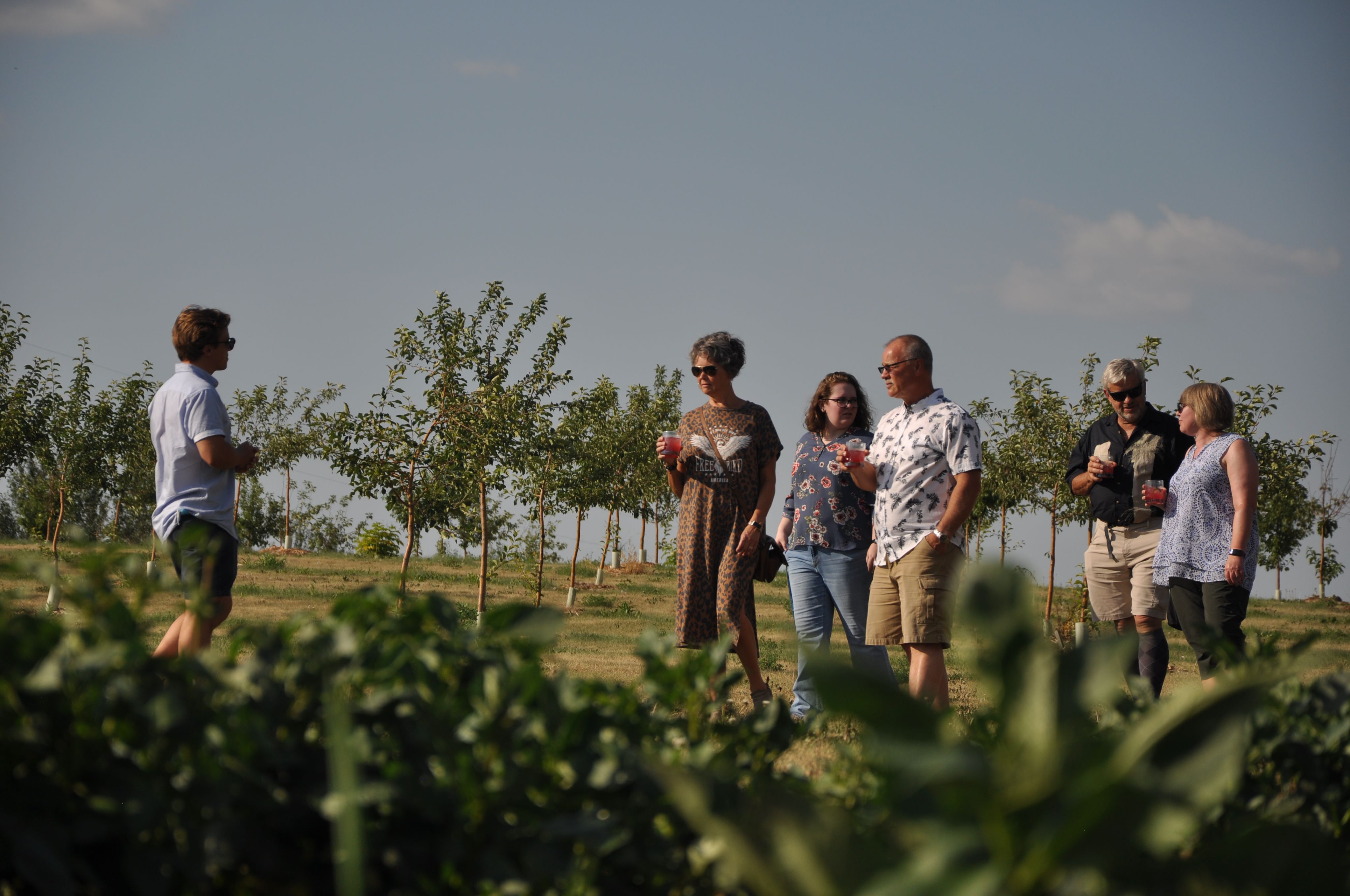
Their successes result from a commitment to continual improvement. “We are striving for perfection,” Barb said. “Every day we try to do something a little bit better than the day before. “
That includes their commitment to environmental sustainability, which begins, literally, from the ground up.
“It starts with the soil. We do zero till, we do integrated pest management, crop rotation and a lot of what would be considered regenerative (agricultural) practices,” she said. “We realize the soil is the base of all life and we need to not only maintain it but improve it for future generations.”
They’re also big on the three Rs – reduce, reuse, recycle.
For instance, leftover mash from the distillery is used as compost fertilizer for the fruits and the flowers they grow. And they recycle about 95 percent of the water that is used daily. They’ve also eliminated most of the plastic used on the service side of the business.
“We recognize that we’re on Treaty 6 territory and we are the caretakers, at this point in time, of the land,” she said. “It is our responsibility to turn it over to the next generation in better shape.”
Adam Martin-Robbins
Adam Martin-Robbins is a veteran journalist, avid traveller and father of four, who lives in southern Ontario. He enjoys writing about fabulous food, tasty craft beverages, unique vacation destinations and people who are passionate about environmental sustainability.
Adam Martin-Robbins
Adam Martin-Robbins is a veteran journalist, avid traveller and father of four, who lives in southern Ontario. He enjoys writing about fabulous food, tasty craft beverages, unique vacation destinations and people who are passionate about environmental sustainability.
Embrace Canada with Landsby
Landsby creates unique and immersive experiences that not only provide travellers with purposeful and enriching trips but aim to positively impact the communities being explored.
